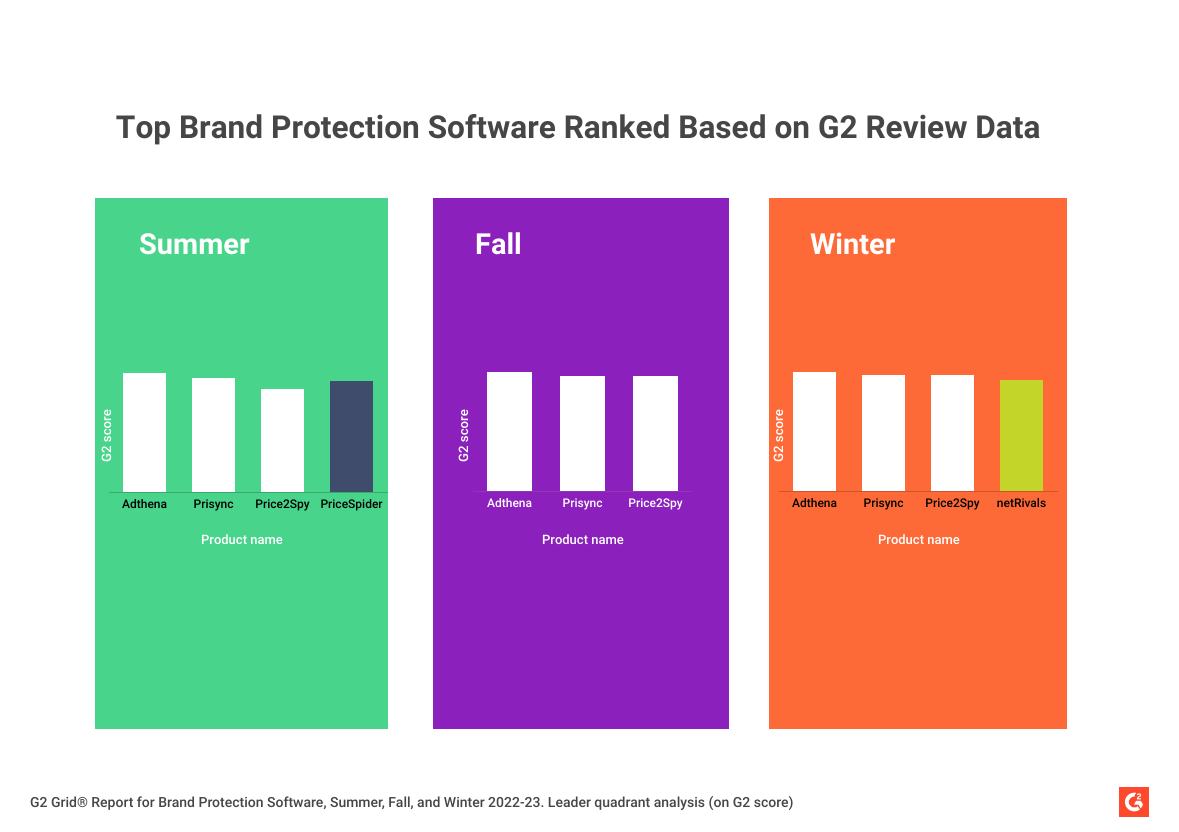Building strong brands is paramount to every company, regardless of industry. But, when it comes to retail, it is much more crucial and complex, given the amount of competition and pressure in this space. With e-commerce and online marketplace dominating retail business sales, there is also a significant rise in nefarious activities online. Hence, protecting brands is crucial to every retailer, given the widespread risk of counterfeiters, copyright violators, and infringers of patents. In this blog, we will understand the importance of brand protection and how brand protection software plays a vital role in preserving brand equity in the e-commerce world.
Brand protection: why is it important?
The growing popularity of e-commerce in the post-COVID years has changed the entire retail industry. Most consumers now prefer to shop online from brands' e-commerce websites, social media, and marketplaces like Amazon, eBay, Kroger, Walmart, etc. It is now much more convenient for sellers to enter marketplaces and list their products instead of worrying about the pain of managing an e-commerce website. While the advancement in e-commerce has opened the gates for brands to reach millions of customers globally, it also exposes brands to malicious activities online.
What is Brand Protection Software?
In simple terms, brand protection is the process of protecting a company’s intellectual property (IP) such as patents, designs, colors, logos, trademarks, etc., associated with the brands. Brand protection software tracks all brand abuse on digital platforms and takes down scams, violations, counterfeits, and infringements. It also enforces resellers with brand policies and standards to adhere to before selling products on any form of digital channels.
A brand can be exposed to vulnerabilities in many ways. The most common term used for such violations in e-commerce is brand abuse. Brand abuse is tampering with the IP associated with the brands and destroying the brand reputation which results in a lowering sales revenue. Some of the most common forms of brand abuse are:
- Counterfeiting: Using an authentic brand’s name, logo, trademark, etc to produce a counterfeit brand to deceive customers.
- Cybersquatting: Unauthorized registration, use, and sale of identical internet domain names with the intention to destroy the goodwill of an authentic brand’s trademark.
- Website/app spoofing: Producing duplicate brand websites or apps identical to that of the original brand with the intention to mislead visitors and tamper with brand reputation.
- Copyright infringement: Distributing copyrighted content, image, and videos of brands digitally without permission of the creator or producer.
- Social media impersonation: Creating duplicate social media pages using an authentic brand’s name, image, or other elements of a brand or company for fraudulent purposes.
There are also several other forms of brand abuse that include brand abuse through advertising. Pirates invest in online ads and search engine marketing (SEM) to steal real user clicks and get better search rankings on brand names and products that don’t belong to them. It adversely affects the company’s investment in the advertisement as the trust gained by brands gets misled by pirates. Fake products can damage the brand's reputation and revenue and cause serious issues for consumers. Imagine malicious actors selling products that don’t adhere to the company’s manufacturing standards. In the case of food and beverage products, it could be potentially life-threatening in a worst-case scenario.
Brand abuse can be checked by taking the necessary steps. Now, let's understand how a brand protection strategy can help us achieve this goal.
| Read more: 6 Security Threats E-Commerce Businesses Frequently Face → |
The ultimate brand protection strategy
Formulating and implementing a brand protection strategy is imperative to ensure the reputational integrity of a brand. Brands should adhere to the right law that advocates brand safety and implement technology to detect and mitigate incidents.
Legal: The first step to protecting your brand is to make sure the IP of the brand is registered as a trademark. Not having a registered trademark allows pirates to break into the brands easily and produce counterfeit. Sometimes it is also a good idea to sign a non-disclosure agreement (NDA) with the partner seller to allow selling on the marketplace.
Technology: After making sure the brand adheres to legal standards, it’s time to monitor your channel with the right technology. Brand protection software typically encompasses four processes to bring down brand abuse:
- Detection: Brand protection software, with the help of technology like image recognition, keyword monitoring, and artificial intelligence captures duplicate images, content, logos, counterfeit listing, and fake social media profiles on the internet and typically e-commerce marketplaces.
- Validation: Validating authentic infringement ensures legitimate brands are not getting punished and that the detection is 100% correct.
- Enforcement: Once all the genuine infringements are tracked down, brand protection software helps remove product listings from e-commerce stores, blocks fake ads, and takes down pirated seller accounts.
-
Reporting: Brand protection software generates insightful reports and dashboards to see entire details of accounts taken down, products removed, ads blocked, and other metrics and scores to rank the safety of the brand.

G2’s Brand Protection Software category has 58 dedicated products to help brands in this initiative. As per G2’s Grid® Report for Brand Protection | Winter 2023, Price2Spy, Adthena, Prisync, and netRivals are the highest-rated products by G2 users and are placed in the Leader quadrants of the G2 Grid®. Also, Price2Spy, Adthena, and Prisync have maintained their position in the Leader quadrant throughout the summer and fall reports published in 2022-2023. PriceSpider and netRivals are new additions to the Leader quadrant of the summer and winter reports respectively.
Education: Educating customers about brands also ensures brand protection and avoids being tricked. Customers should be equipped with the right knowledge to identify a legitimate brand by looking at the trademarks and should be able to differentiate between an authentic brand and a duplicate brand.
Over the years, companies have taken a lot of initiatives to protect brands from pirates. Now, let's look at some use cases by companies in recent years.
Brand protection use cases
eBay allows IP rights owners to report eBay listings through its Verified Rights Owner (VeRO) Program. The IP owners can report the infringement by submitting a Notice of Claimed Infringement (NOCI) to eBay's VeRO program.
Amazon’s brand registry program allows IP owners to protect their IP, and gain complete control over their product listings. Another program, Project Zero, detects counterfeit products and removes them from Amazon’s site.
Implementing Red Points solutions, Hugo Boss removed 9,200 fraudulent listings on social media as the brand was experiencing a rise in counterfeit products post-COVID years.
What next?
As the e-commerce space is becoming more chaotic with websites and marketplace flooding with sellers tapping into online sales, the urgency to protect brands has become the need of the hour. G2’s Brand Protection category is still growing and the traffic to this category has been inconsistent over the last two years. This may be happening because brands are more dependent on marketplaces for sales where they, by default, have brand protection solutions or programs in place. However, with growing awareness in the e-commerce and online shopping world, we predict this category to have a bright future ahead.
| Read more: 2023 Trends in the E-commerce Industry → |
Edited by Sinchana Mistry
Want to learn more about E-commerce Fraud Protection Software? Explore E-commerce Fraud Protection products.

Subhransu Sahu
Subhransu is a Senior Research Analyst at G2 concentrating on applications technology. Prior to joining G2, Subhransu has spent 2 years working in various domains of marketing like sales and market research. Having worked as a market research analyst at a renowned data analytics and consulting company based in the UK, he holds expertise in deriving market insights from consumer data, preparing insight reports, and client servicing in the consumer and technology domain. He has a deep inclination towards tech innovation and spends most of his time browsing through tech blogs and articles, wiki pages, and popular tech channels on youtube.
